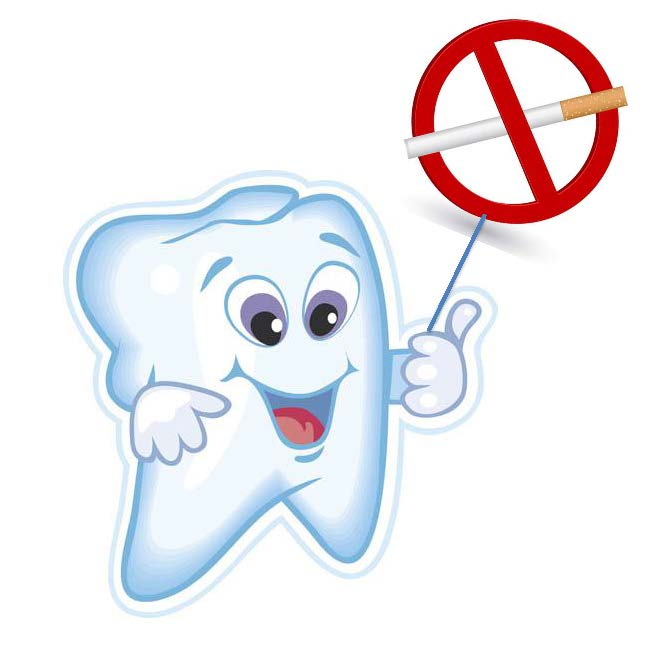In addition to several other chronic diseases, tobacco use is a primary cause of many oral diseases and adverse oral conditions. For example, tobacco is a risk factor for oral cancer and periodontal disease. It can also cause stained yellow or brown teeth, bad breath, and loss of teeth. Smoking is thought to alter bacteria in dental plaque, making it more harmful.
In general, smokers can expect to develop some combination of the following, depending on the amount and length of time they have smoked:
-
Persistent bad breath
-
Discolored teeth
-
An increase in calculus (tartar) build-up
-
Periodontal (gum and bone) disease that may progress more quickly and be more severe than in non-smokers
-
Jaw bone loss
-
Shifting teeth
-
An increased number of missing teeth
-
Oral cancers
-
Mouth sores
-
Root caries (cavities)
-
Sinusitis
-
Hairy tongue
-
Smoker’s lip (like a burn)
-
Altered sense of taste and smell
-
Delayed wound healing
Gum Disease
Smoking has been established as a significant risk factor for gum disease. Tobacco reduces blood flow to the gums, depriving them of oxygen and nutrients that allow gums to stay healthy, and leaving them vulnerable to bacterial infection.
According to one U.S. study, cigarette smoking may play a major role in more than half the cases of severe gum disease in adults. Current smokers were about four times more likely to have periodontitis than people who had never smoked. (Ref: J.Periodontology 2000 May:71(5):743-51)
If unchecked, periodontal disease can lead to complete destruction of the tooth’s supporting tissues, abscesses and, ultimately, loss of the tooth.
Caring for your Teeth and Gums
If you are a smoker, there are some things you can do to prevent tooth and gum problems:
-
Try to quit smoking – speak to your doctor or dentist or call helpline for guidance and support.
-
If quitting smoking is too difficult, try and reduce the number of cigarettes you smoke.
-
Thoroughly clean your teeth and gums twice a day with toothpaste that contains fluoride.
-
Use dental floss every day to clean between your teeth.
- Visit your dentist regularly for advice about the proper care of your teeth and gums at home, early intervention and regular preventive maintenance visits to keep your teeth and gums healthy.
-
Avoid having a dry mouth – drink plenty of water and chew sugar-free gum to stimulate saliva production.
-
Limit your alcohol intake.
To stop using tobacco or smoking habit, people can also join smoking cessation classes and support groups along with drug therapy. Ask your doctor or dentist for information on similar programs they may be familiar with.
Ref: www.webmd.com
www.who.int
www.cdho.org










